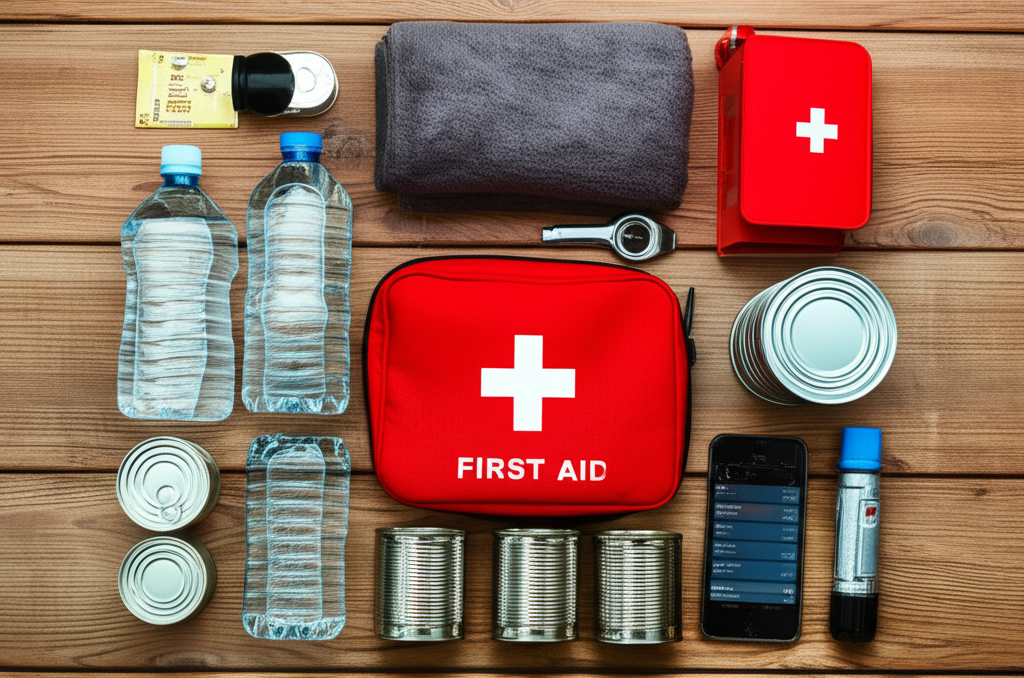Emergency Preparedness for Newborn Care Professionals

The Critical Importance of Emergency Preparedness
As a newborn care professional, you are often the first line of defense in emergency situations. Your preparedness, quick thinking, and proper response can make the difference between a minor incident and a life-threatening situation. This comprehensive guide covers essential emergency preparedness strategies every professional should master.
Medical Emergencies
Respiratory Emergencies
Breathing difficulties are among the most serious emergencies in newborn care:
Choking Response
- Recognition: Silent crying, inability to cough, blue coloration
- Infant technique: 5 back blows, 5 chest thrusts, repeat
- Position: Face down on forearm, head lower than chest
- When to call 911: Immediately, even if object is dislodged
Breathing Difficulties
- Signs: Rapid breathing, retractions, grunting, color changes
- Immediate actions: Clear airway, position for optimal breathing
- Monitoring: Respiratory rate, oxygen saturation if available
- Emergency response: Call 911 for severe distress
Cardiac Emergencies
While rare in healthy newborns, cardiac emergencies require immediate response:
Infant CPR
- Recognition: Unresponsive, not breathing normally
- Compression technique: Two fingers, 1/3 chest depth
- Rate: 100-120 compressions per minute
- Ratio: 30 compressions to 2 breaths (single rescuer)
Rescue Breathing
- Technique: Cover mouth and nose, gentle puffs
- Volume: Just enough to see chest rise
- Rate: 1 breath every 3-5 seconds
- Assessment: Check for response every 2 minutes
Environmental Emergencies
Temperature-Related Emergencies
Hyperthermia (Overheating)
- Signs: Hot, flushed skin, rapid breathing, lethargy
- Immediate care: Remove excess clothing, cool environment
- Cooling methods: Lukewarm water, fan, cool cloths
- Medical attention: Temperature over 100.4°F (38°C)
Hypothermia (Too Cold)
- Signs: Cool skin, slow movements, poor feeding
- Warming techniques: Skin-to-skin contact, warm blankets
- Gradual warming: Avoid rapid temperature changes
- Monitoring: Core temperature, responsiveness
Injury Prevention and Response
Falls and Impact Injuries
- Prevention: Proper positioning, safety equipment use
- Assessment: Level of consciousness, movement, crying
- Head injuries: Any head impact requires medical evaluation
- Documentation: Detailed incident reporting
Burns and Scalds
- Prevention: Temperature testing, safe handling practices
- First aid: Cool running water, remove from heat source
- Assessment: Size, depth, location of burn
- Medical care: Any burn larger than a quarter needs evaluation
Household Emergency Preparedness
Fire Safety
Prevention Measures
- Smoke detectors: Check batteries, test monthly
- Escape routes: Know all exits, practice evacuation
- Fire extinguishers: Location and proper use
- Electrical safety: Outlet covers, cord management
Emergency Response
- Evacuation priority: Get baby out immediately
- Smoke inhalation: Stay low, cover baby's airway
- Meeting point: Predetermined safe location
- Emergency services: Call 911 from safe location
Natural Disasters
Earthquake Preparedness
- During shaking: Drop, cover, hold on with baby
- Safe locations: Under sturdy furniture, away from windows
- After shaking: Check for injuries, hazards
- Evacuation: Use stairs, never elevators
Severe Weather
- Tornado safety: Lowest floor, interior room, away from windows
- Hurricane preparation: Supplies, evacuation routes
- Power outages: Alternative heating/cooling, food safety
- Communication: Battery-powered radio, charged devices
Emergency Supply Kit
Medical Supplies
- First aid kit: Bandages, antiseptic, thermometer
- Medications: Any prescribed medications, infant acetaminophen
- Emergency contacts: Pediatrician, poison control, family
- Medical information: Allergies, medical conditions, insurance
Baby-Specific Supplies
- Feeding supplies: Formula, bottles, water
- Diapers and wipes: 3-day supply minimum
- Clothing: Weather-appropriate, multiple sizes
- Comfort items: Blankets, pacifiers, toys
Communication and Documentation
- Emergency contacts: Parents, family, medical providers
- Important documents: Medical records, insurance cards
- Communication devices: Cell phone, chargers, radio
- Cash: Small bills for emergencies
Communication During Emergencies
Emergency Services
When to Call 911
- Breathing difficulties: Severe distress, blue coloration
- Unresponsiveness: Cannot wake baby, no response to stimuli
- Severe injuries: Head trauma, significant bleeding
- Poisoning: Suspected ingestion of harmful substances
Information to Provide
- Location: Exact address, nearest cross streets
- Situation: Clear description of emergency
- Patient information: Age, weight, current condition
- Actions taken: First aid provided, current status
Parent Communication
Immediate Notification
- Timing: Call parents immediately for serious situations
- Information: Facts only, avoid speculation
- Location: Where you are, where you're going
- Follow-up: Regular updates on situation
Documentation
- Incident reports: Detailed, objective documentation
- Timeline: Sequence of events, times, actions taken
- Witnesses: Anyone present during incident
- Follow-up care: Medical treatment, recommendations
Training and Certification Maintenance
Required Certifications
- CPR certification: Infant and child CPR, renewed every 2 years
- First aid training: Pediatric first aid certification
- AED training: If available in the home
- Specialized training: Based on specific client needs
Ongoing Education
- Refresher courses: Annual skills practice
- New techniques: Stay current with best practices
- Scenario training: Practice emergency responses
- Professional development: Advanced emergency care training
Psychological Preparedness
Stress Management
- Stay calm: Your composure affects everyone around you
- Clear thinking: Follow protocols, don't panic
- Confidence: Trust your training and experience
- Self-care: Process traumatic events appropriately
Post-Emergency Support
- Debriefing: Review what happened, what went well
- Professional support: Counseling if needed
- Learning opportunities: Use experiences to improve preparedness
- Family support: Help families process traumatic events
Remember, emergency preparedness is not about expecting the worst—it's about being ready to provide the best possible care when unexpected situations arise. Regular training, proper preparation, and calm, confident responses can make all the difference in protecting the precious lives entrusted to your care.
About Captain Lisa Rodriguez, EMT-P
Captain Lisa Rodriguez, EMT-P is a certified newborn care specialist with over 10 years of experience supporting families during the postpartum period. She specializes in safety & emergencyand is passionate about helping families thrive during this precious time.
Stay Updated with Professional Insights
Join our community of newborn care professionals and get expert tips, industry updates, and exclusive resources delivered to your inbox.